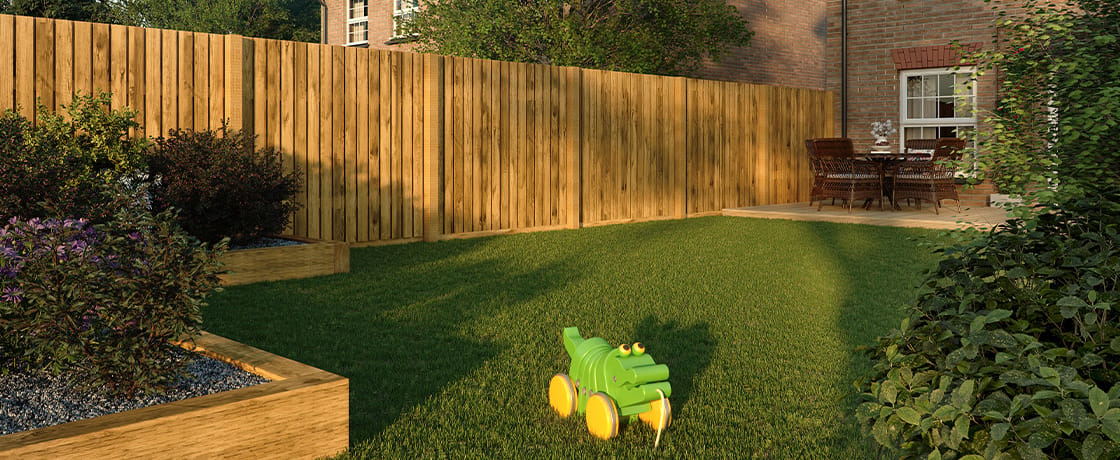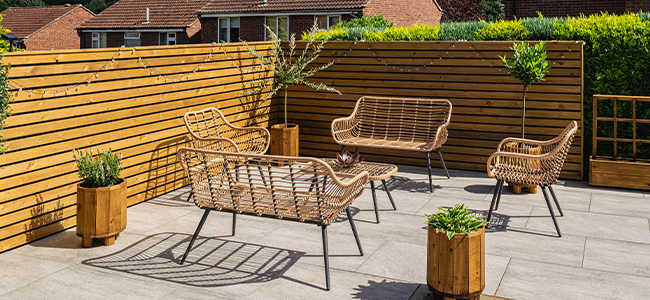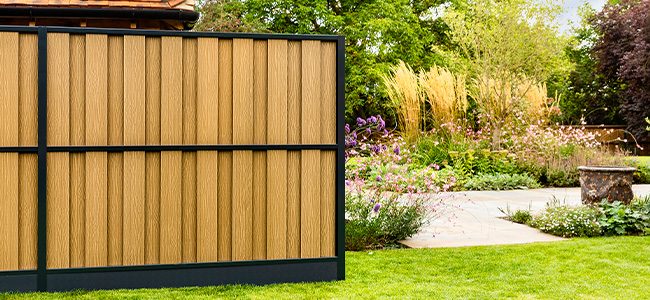
What is Insect Resistant Wood, and do you need it?
Published on October 30, 2025
Posted in Advice & Reviews
by MKM
3 mins min read
Whether it's decking, cladding, fencing, or outdoor furniture, when planning an outdoor project, durability is crucial. One of the biggest threats to untreated wood is insect damage, particularly from wood-boring beetles that thrive in the UK's damp climate. Choosing insect-resistant wood can save you money, time, and frustration in the long run.
But what exactly makes timber insect-resistant, and how do you know if your project needs it?

What Makes Wood Insect-Resistant?
As a general rule, if your project is outdoors, you will almost always need timber that offers insect resistance. Insect-resistant wood is timber that naturally resists attack from wood-boring insects, or has been treated to do so. Some species contain natural oils, resins, or dense fibres that insects avoid or cannot chew through. Others are pressure-treated to form a protective barrier that keeps bugs at bay.
In the UK, the main timber pests are the common furniture beetle, the deathwatch beetle, the powderpost beetle (which are especially rampant between March and September), and the house longhorn beetle, which is mainly found in southern England. These beetles lay eggs in wood, and the larvae tunnel through it, weakening structures from the inside out.
Timber can resist these threats in two ways: naturally, due to the wood's chemical composition and density, or artificially, through preservative treatment such as tanalised timber (wood which has undergone a pressure treatment process, both drying the wood and expanding its lifespan). Understanding this difference helps you choose the right timber for the job based on budget, exposure, and project lifespan.
Key Timber Species with Natural Insect Resistance
If you prefer untreated timber, some hardwoods and softwoods naturally offer excellent resistance to insect damage. These are ideal for outdoor or structural use, where longevity and performance matter.
1. Oak
European oak is incredibly dense, with natural tannins that deter insects and fungi. Oak is a go-to choice for beams, cladding, outdoor joinery, and heritage work. With proper installation and care, oak can last decades without chemical treatment.
2. Teak
A tropical hardwood packed with natural oils and silica, teak is almost bulletproof when it comes to insect and rot resistance. Often used in premium outdoor furniture and boat decks, teak is low-maintenance and ages to a silvery finish over time.
3. Cedar
Western red cedar contains thujaplicins, natural preservatives that make cedar resistant to bugs and decay. Cedar is lightweight, easy to work with, and has a pleasant aroma, making it perfect for sheds, and fences. While not as tough as teak or oak, cedar offers solid protection in most UK conditions.
Treated Timber: Affordable Protection That Works
Not every job needs expensive hardwood. Pressure-treated softwoods are a smart, budget-friendly option that offers solid protection against insect damage and decay."Tanalised" is a brand name for one of the most common types of treated timber in the UK, but the term "treated softwood" covers all pressure-treated timber, regardless of the preservative used.
Tanalised Timber
Tanalised timber is pressure-treated with a water-based preservative (Tanalith) that helps repel insects, fungi, and rot. Tanalised timber is commonly used for decking frames and joists, fence posts and rails, outdoor sheds and structures, and structural framing in damp conditions.
Treated softwood
If you don't want to pay for premium hardwood, treated softwood is a great alternative. The timber is pressure-treated with preservatives that protect it against insects, rot, and damp, making it much longer-lasting than untreated wood. This makes treated softwood ideal for everyday outdoor projects like decking frames, fence posts, sheds, and garden buildings.
Understanding Use Class Ratings
Treated timber is graded by Use Class, which tells you how and where the timber can be used safely:
- UC3: Exposed to weather, but not in ground contact (e.g., decking boards, cladding)
- UC4: Ground contact or constant damp (e.g., fence posts, sleepers)
Always choose UC4-rated timber for anything that touches soil. This ensures the preservative treatment is strong enough to withstand prolonged moisture exposure and prevent insect infestation. With the right choice, treated softwood can last many years while keeping costs down.
At MKM, we stock a full range of green-treated softwoods, which are ideal for fencing and landscaping jobs.
|
Timber Species |
Insect Resistance |
Typical Uses |
Key Considerations |
|
Oak (European) |
Excellent - naturally dense heartwood resists insect attack and decay |
Structural beams, cladding, exterior joinery, outdoor furniture, heritage projects |
Heartwood offers the best protection. Sapwood is more vulnerable in damp conditions, so specify heartwood where possible |
|
Teak |
Exceptional – natural oils and silica content provide premium insect and rot resistance |
High-end outdoor furniture, yacht decking, premium joinery |
Top-tier durability, but proper detailing and drainage still matter for long-term performance in UK weather |
|
Cedar (Western Red) |
Good – natural preservatives offer solid protection among softwoods |
Cladding, fencing, sheds, garden buildings, lightweight structures |
Better than untreated softwood, but not as durable as oak or teak. Benefits from good ventilation and occasional sealing |
|
Treated Softwood (e.g. tanalised) |
Good to Excellent – pressure treatment provides reliable chemical protection against insects and decay |
Decking frames, fence posts, garden structures |
Durability depends on Use Class rating 1-5 (UC3 for above-ground, UC4 for ground contact). You should always seal cut ends to maintain protection |
At MKM, we stock a range of naturally durable hardwoods and softwoods suitable for both DIY and professional projects. Explore our timber range to find the right species for your needs.

I Have Insect-Resistant Timber, Now What? Top Tips for Long-Lasting Timber
Even the most durable timber needs proper care and installation. Here's how to make your timber last as long as possible:
- Store it right - keep timber off the ground, covered, and dry before use.
- Treat cut ends – apply end-grain preservative after cutting treated wood to maintain protection.
- Use the right fixings – stainless steel or galvanised screws and nails prevent rust stains and corrosion that can weaken timber over time. Browse our outdoor fixings and hardware to find the right fasteners for your project.
- Leave expansion gaps – timber moves with moisture levels, especially outdoors.
- Maintain finishes – oil or seal regularly if you want to preserve colour and enhance protection.
- Inspect yearly – check timber annually, especially in damp or shaded areas, for early signs of damage.
Proper care and maintenance help protect your timber from insect damage and extend its lifespan. Got more questions? Want to know how to implement a bug-free shed? You'll find everything from wood preservers to decking oils in-store or online at MKM. Browse our wood care products.
Build It to Last with MKM
Whether you're building a treehouse, a shed, or a new fence, choosing insect-resistant timber is key to making sure it lasts. Natural hardwoods like oak and teak offer premium, long-lasting protection. Treated softwoods offer great performance at a better price point.
At MKM, we stock a full range of treated softwood, cladding, and decking, as well as everything you need to finish the job right.
Need help choosing the right timber? Pop into your local MKM branch, or explore our range online at MKM.co.uk. We're always happy to help you get the job done properly.